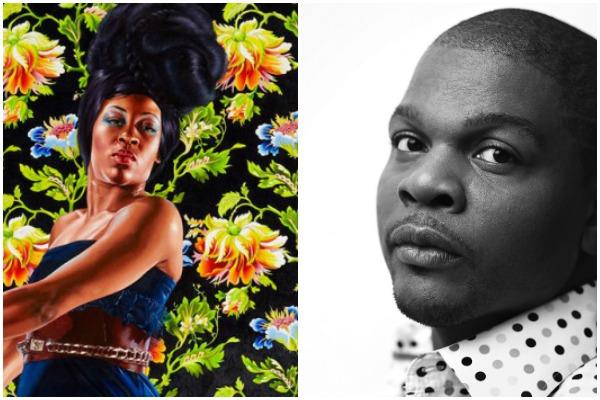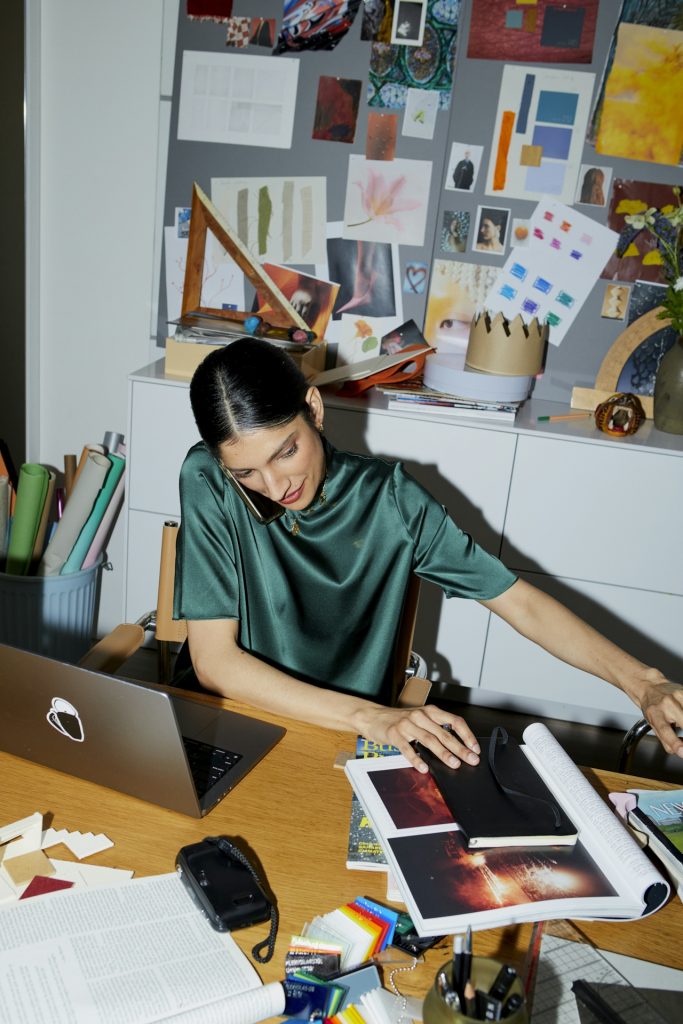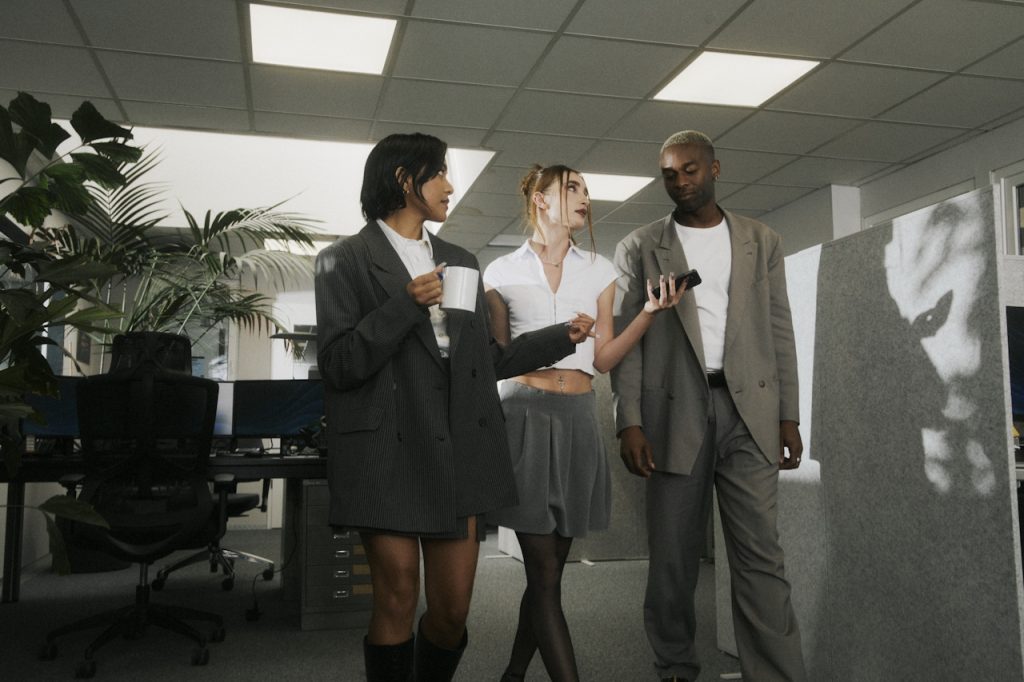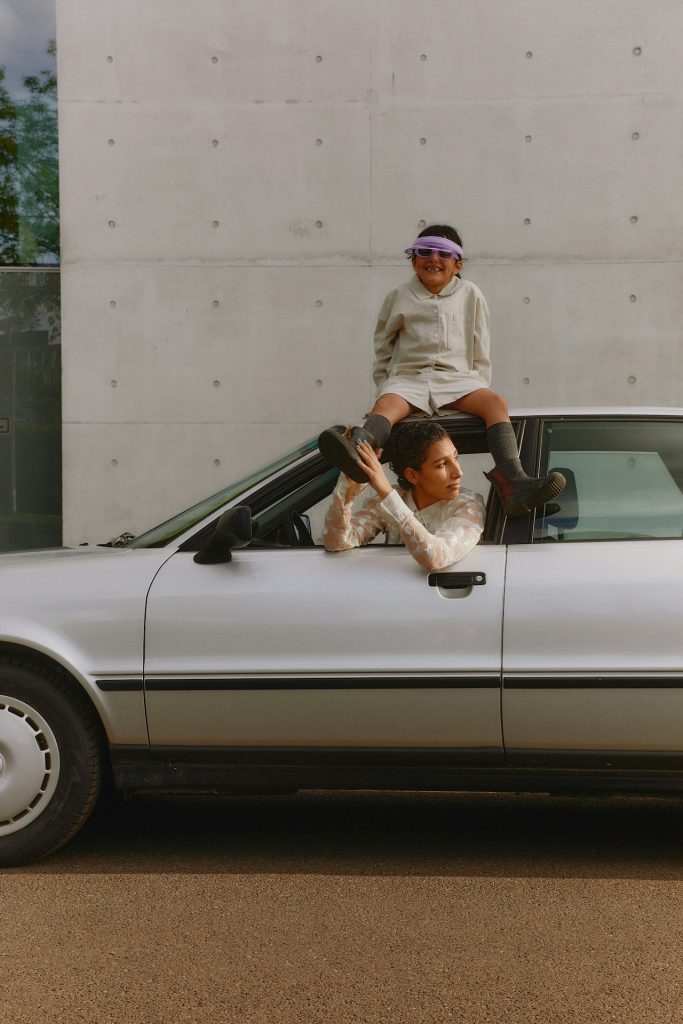We hit the TIFF Bell Lightbox in Toronto last week for the opening night of the Canadian Art Foundation’s Reel Artists Film Festival (RAFF). The festival – which showcases vibrant art-based documentaries – kicked off with the world premiere of Kehinde Wiley: An Economy of Grace. The film documents the collaboration between renowned New York-based painter Kehinde Wiley and Givenchy Creative Director Riccardo Tisci for Wiley’s latest exhibit. For the fellow fashion-loving art enthusiast, the doc offers a fusion of both as it raises questions of power, race, class, art history and gender.
Wiley, an American painter who grew up in South Central Los Angeles, has become well known for his intriguing representation of historical portraits – traditionally reserved for the white, upper class – that feature modern-day African-American men. In the 2012 exhibit Kehinde Wiley: An Economy of Grace, Wiley explores female subjects for the first time. In another departure from his past work, where he featured his subjects in their own street clothes, Wiley teamed up with Tisci to create beautiful couture gowns for the models.
The subjects, all African American women, were cast by Wiley from the streets of New York City. Some barely recognized the Givenchy name; one was a prison guard. They never imagined themselves in a couture gown, let alone front and centre of a photo shoot that resulted in a stunning painted image worth upwards of $250,000, gracing the walls of one of the hottest galleries in the city. If it isn’t obvious already, Wiley’s work is widely regarded in the contemporary art world and he’s regularly featured in major American publications like Vogue, GQ and The New York Times. We caught up with him in Toronto pre-screening to hear a little more about the film…
What was your inspiration, first for creating the exhibition a few years back, and second for your participation in this documentary?
I would say my mother, my sisters, and all of the black females in my life. It was a matter of wanting to somehow do something that paid homage to them. Also, I think my inspiration and desire to want to wean myself off my safe zone and push myself toward something that allowed me to rethink all of what I had been working on for the past ten years. What I had been doing was an investigation of masculinity, as it exists in painting culture. It explored the ways in which art, artists and art history have sort of evolved into this vocabulary surrounding the male ego, the buttressing of states, heads of states, and men of means. So much of what I wanted to do was to critique that, but also to talk about how much I love the material practice of painting. So that’s what I had been up to, and Economy of Grace was an opportunity to forward that narrative while turning toward a different direction as well, so it was sort of like an additive process. It was much less of a thing where you cut something out and declare to start something new, but more of an evolution.

Was this theme of evolution and your desire to take the work another step further the inspiration behind the creation of the documentary?
The documentary was the product of a few things. I have travelled the world and do this all over the place now, and I always have a camera with me. Every show has the paintings there, sure, but it also has a mini-documentary that sort of accompanies it. It was really cool to see and use that material. I have had them in my archives, and always had this idea that we would do something with them, so when Jeff came up with the idea that we should do the film together, I was like, well, if you need any background stuff, you could always use the stuff we shot in Congo, or Israel, or Brazil…or whatever. That was a good resource.
How did the collaboration with Riccardo Tisci materialize?
Well, Riccardo is a friend of a lot of people who I know, so that sort of cleared the air about who he was, what he was about, and what his tastes were. I had also been a fan of his work for quite a while. With this show, I wanted to concentrate on the beauty question and some of the falseness as it relates to fashion and the performance of femininity in painting – and to really turn up the volume in that direction. It isn’t to scare you away from it, but to really realize, wow, this is a space where women have been isolated. Then there’s the painting. Historically, it is either all about chest-beating portraits of men or women being painted for specifically for the male gaze and male consumption. I wanted to explore that and to question how fashion plays a role in that. Is it complicit within that process or is it something that women have gone through to express themselves independently of whatever their husbands or society dictates? I ask how fashion functions as a historical source of amour, and how it functions today as well, especially considering I have done so much urban wear work in my other stuff. So it was really important that the attire be couture for those reasons, and also sort of for the whole status question. I explore the economics of race within the painting, along with how much paintings are a depiction of your social standing, so we considered how couture would be able to further submit that to the public’s imagination.

Is there anything you wanted to add in terms of inspiration behind the individual gowns?
Each gown came out of a trip we did to the Louvre. We were looking at Greek costuming; I think that’s one of the reasons why organza was being used so heavily. Also, I don’t know if you saw this in the film, but there was some interesting conversation around chains and around how that plays in with our history and depictions of race.
How did you choose specifically what portraits you wanted to recreate?
This was the Louvre, and we were able to get a private audience there, so imagine walking through the Louvre by yourself with this insane display of portraiture… I was basically just taking it in and I really didn’t know what I was going to paint, but wrote down my list of favourites. Later, after doing the photoshoot, we sort of positioned everyone within the selection.
You share some of your subjects’ personal stories; why was this important?
It adds a layer of humanity so that they are not backdrops to the story, but key and integrated pieces of this picture; they make up the puzzle. It helps the viewer get what I get as an artist. I get to actually interact with the people as an artist and to be curious and ask questions during the photo shoots. It is great to give the viewers a much fuller vision of what these paintings actually are; rather than just an object on the wall, they represent a set of relationships, histories and personal circumstances.

How did you go about selecting these women on the streets of New York in the first place? How did you approach them, and why one and not another?
It was really interesting. I wanted to go to urban centers; economically impoverished, under-served communities that don’t necessarily get the light shed on them. It is really creating that juxtaposition between these incredibly opulent paintings and trying to figure out how to take a moment of chance and have that explode into something really calculated. So there could be someone minding their business, trying to get to work, or to the subway or whatever, and here I come with a boom and shoulder mount cameras and it is kind of insane. Why one over another? It’s chemistry, that sense of self-possession. It’s that it girl thing. It’s the way you walk; there is a carriage, sass, and a swagger to it that you can’t put your finger on, but you know it when you see it. I would go with friends of mine, who know me well and have their own ideas of what makes a great painting. They will suggest people as well and it became sort of a playful game sometimes. The casting is really one of the most enjoyable parts.
Obviously approaching them had to be done with some sensitivity. How did you go about it?
You kind of just know when you approach them who is going to be totally open, but sometimes people fool you. There is this one scene in the film where we stopped this one woman we felt was perfect for it – and she ended up being in the paintings by the way – and was like, “what do you want,” but eventually I convinced her to do it and she ended up being one of the models and probably one of the best. She was very guarded at first, but something opened up and blossomed in the process.
What is the main take-away from the film and the art in general?
Really, what I want people to see, is a level of complexity, a nuance in the work. I want people to be able to look at the film and have those aha! moments, like, well that’s what that means, and that’s why he is doing this. Often in paintings, even in the entire history of art, it is hard for the viewer to get inside the mind of the artist. We are blessed to live in this day and age where artists can actually have a voice in terms of what they intend. Of course that doesn’t mean anything really, because you as a viewer will have your own take on it. I mean, compare yourself as a woman and me as a man looking at these things, and then when we add things like race and class, there are all these different strata through which we view the same object.
Sometimes it helps for the artist to give their point of view. But also, I don’t want to control the experience. It is a weird thing to grapple with; to let it be free, or to express exactly what is in that painting. But I know that there is much more than what is on the wall. That is just a piece of it, and if you can see the full arch of it within context, I think it makes for a much more compelling story.
In this day and age, do you think that your art and the obvious juxtaposition between your subjects and the historic portraits would still make some people uncomfortable?
I don’t think so. I think that tastes are changing and the things that we grew up with and our habits are evolving. There was a day and age when the idea that you would have a young black man on the walls of a respected museum in casual dress, urban gear, would be unthinkable. I think, by and large, what we are starting to see in the reception of my work is not a wholesale change in society – because society isn’t fully there yet – but there is a hunger for it, and there is a celebration of this type of work over anything else. The response in a sense of this is really cool, and this is what I would like to see more of. I get calls and emails and Instagram comments constantly from young artists who say it’s about time we see something like this and this gives me the courage or the enlightenment to make the art myself.
What was the biggest thing you learned from creating the doc?
I learned the power of the camera. I learned that the camera could be a creative and a destructive force at once and that America is different in the way people respond to the camera. It is much more of a just add water Paris Hilton-style celebrity, but in other countries people are shocked or horrified and you get a real sense of “get that thing out of my face.” In other parts of the world, where state power is a much more oppressive force, people see cameras and think immediately police or I am being pursued. It is definitely not a neutral tool.
What do you think the biggest challenge is facing today’s artists of all disciplines?
The biggest challenge is that all of our disciplines are starting to co-evolve in the same narrative. The categories are starting to blur. So fashion people are working as marketing people, musicians are working as writing people, and so on. We are gaining a lot, but losing a lot too. We are losing our ability to see our craft from an arm’s length and to hold it as something unique to someone special. As a young artist, you need a structure because media, communications and modern culture are allowing for a greater sense of connectivity and the broader evolution of culture, and with that we are losing a level of particularity and of craft. I think that one of the reasons why people like my stuff so much is because I can actually paint. Sure, I have assistants who can do backgrounds for me and such, but at the end of the day, I take a hairy stick and paints and rub that around and coax something into the world. I think that so often young people try to take shortcuts and feel like everything is sort of everything, so why specialize?
Though the Reel Artist Film Festival has wrapped up until next year, Kehinde Wiley: An Economy of Grace is slated for wider release in Canada and the US on PBS in the fall, likely among other screenings to be confirmed.
#LYNL | (Live Your Notable Life)
Want more updates on the most Notable things happening so you know before your colleagues do? Get our exclusive newsletter here and follow us on Twitter for all the latest.







